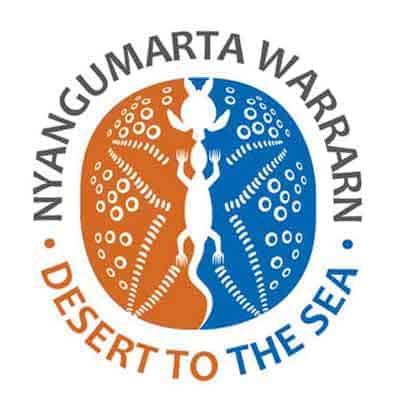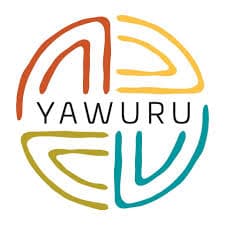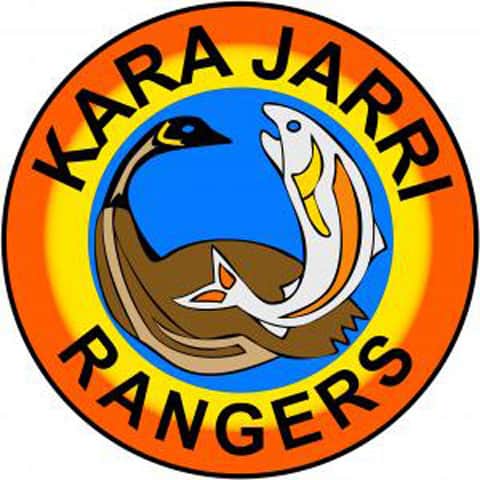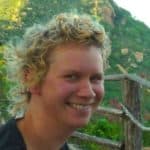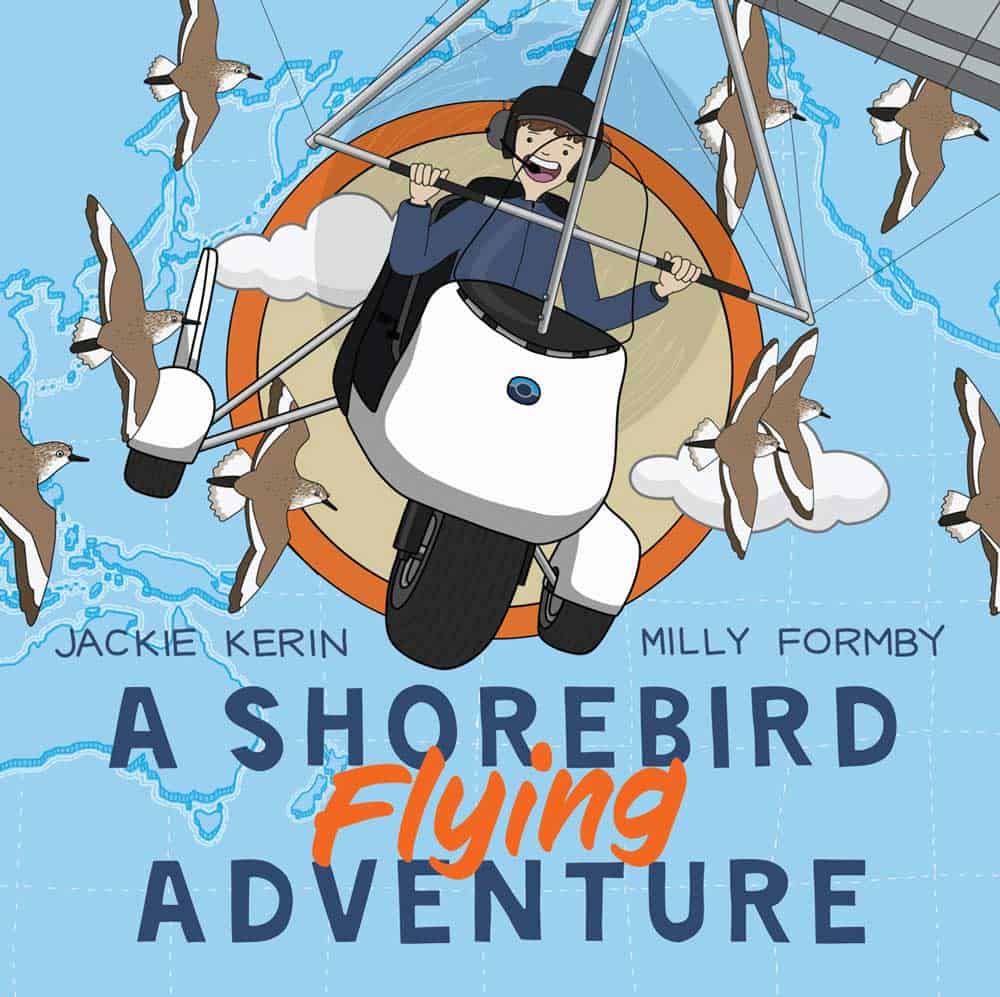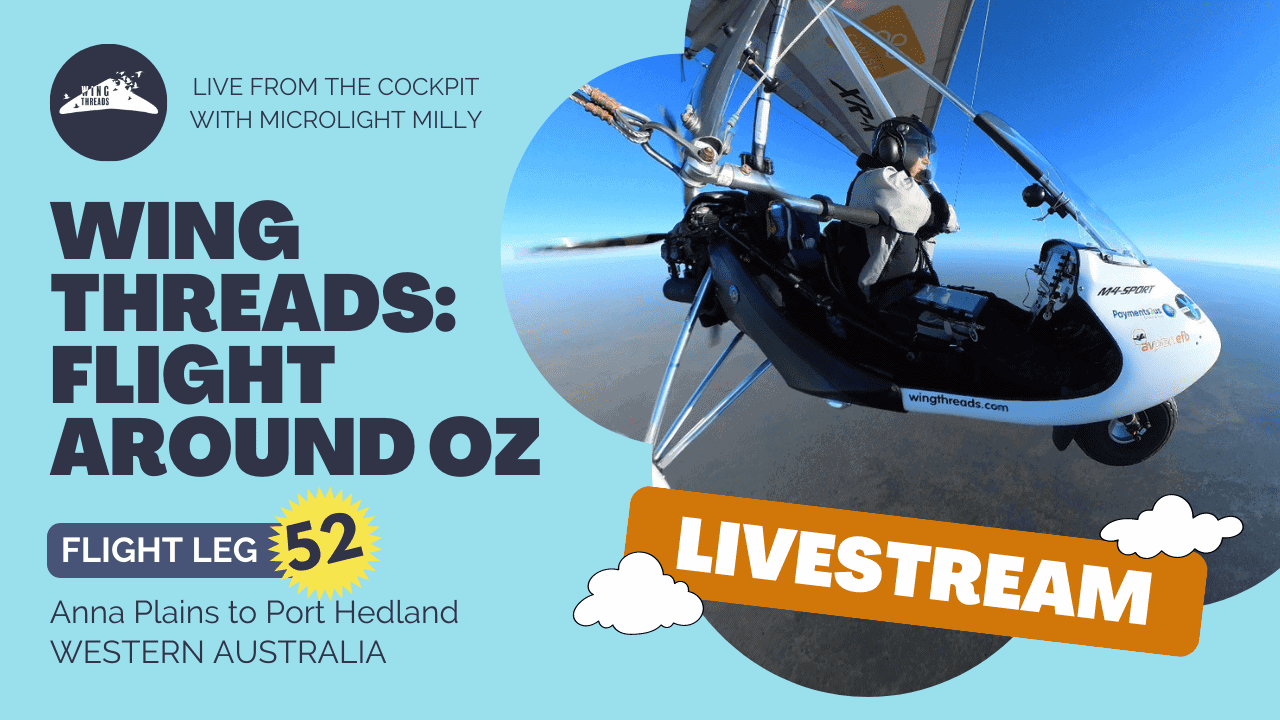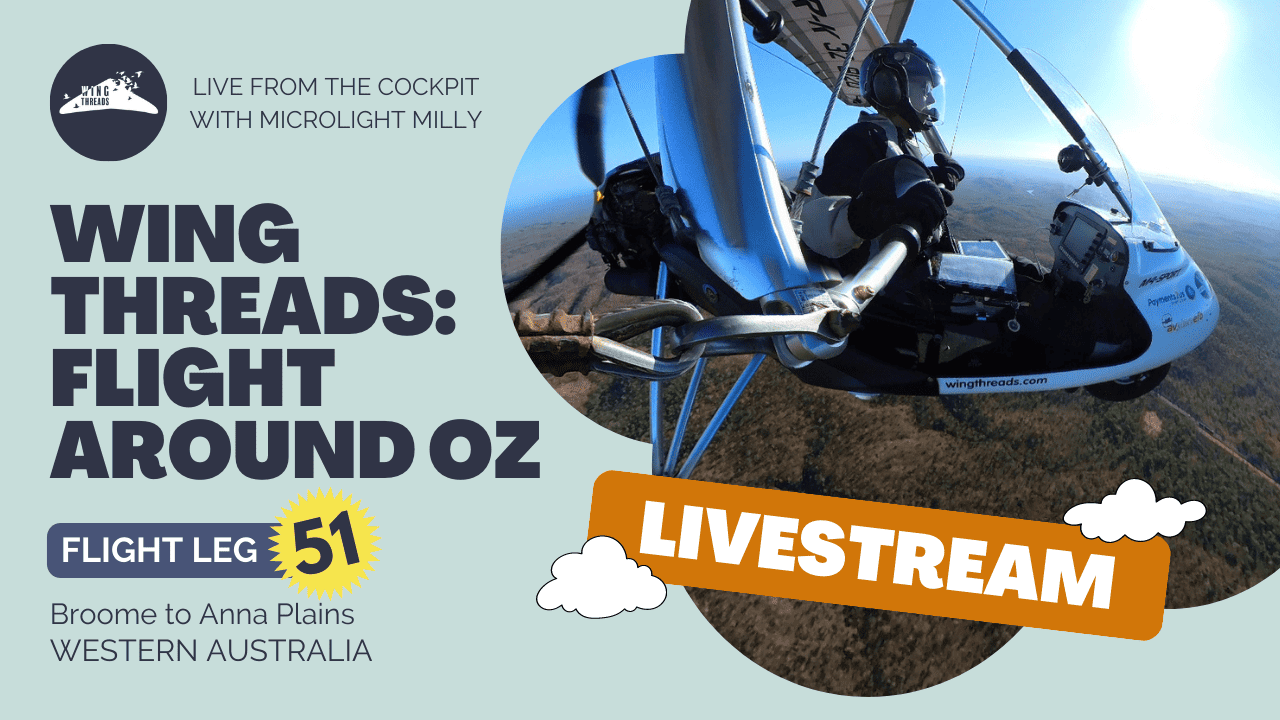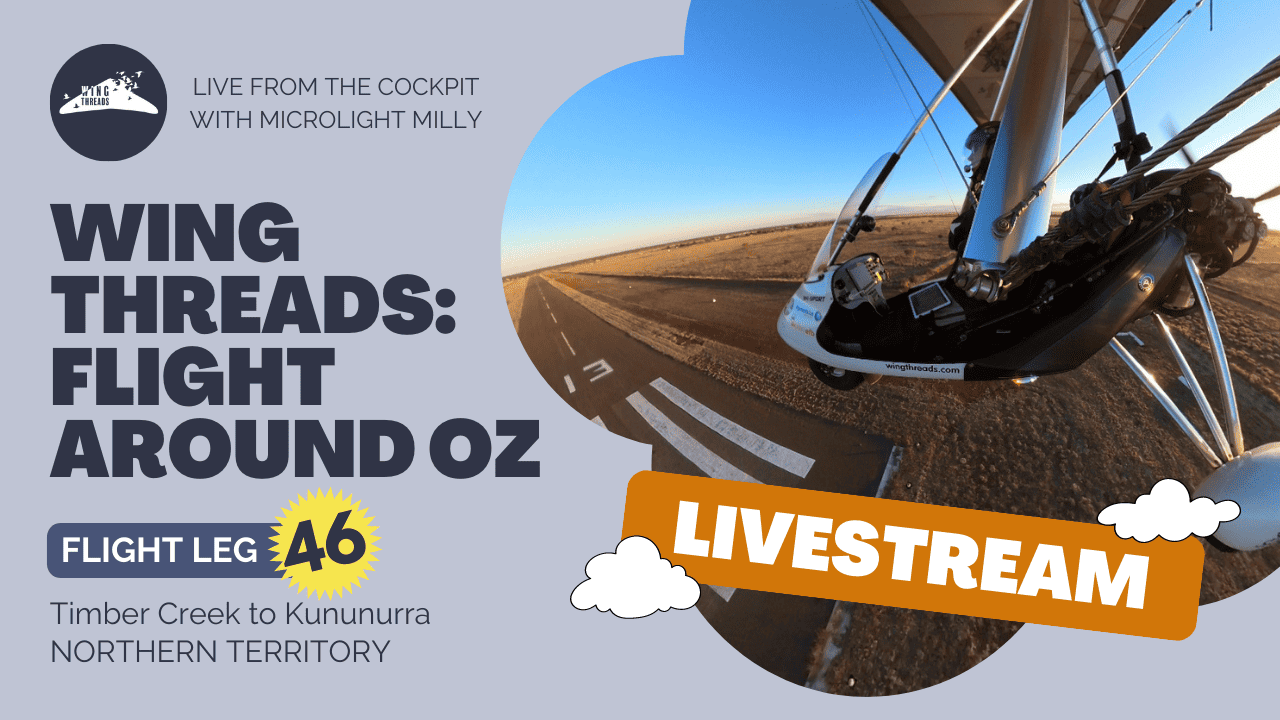A slow growing flock
When we first arrived at Anna Plains Station on the 3rd February, 2019 for the Australasian Wader Studies Group’s annual Wader and Tern expedition to northwest Australia, only a few Little Curlew were present in the grasslands and on the adjacent Eighty Mile Beach.
Little Curlew occur widely on grasslands across northern Australia and their numbers and locations vary markedly from year to year depending on the predominant weather and feeding conditions. The presence of so few Little Curlew on our arrival was most likely the result of January being a relatively dry month.
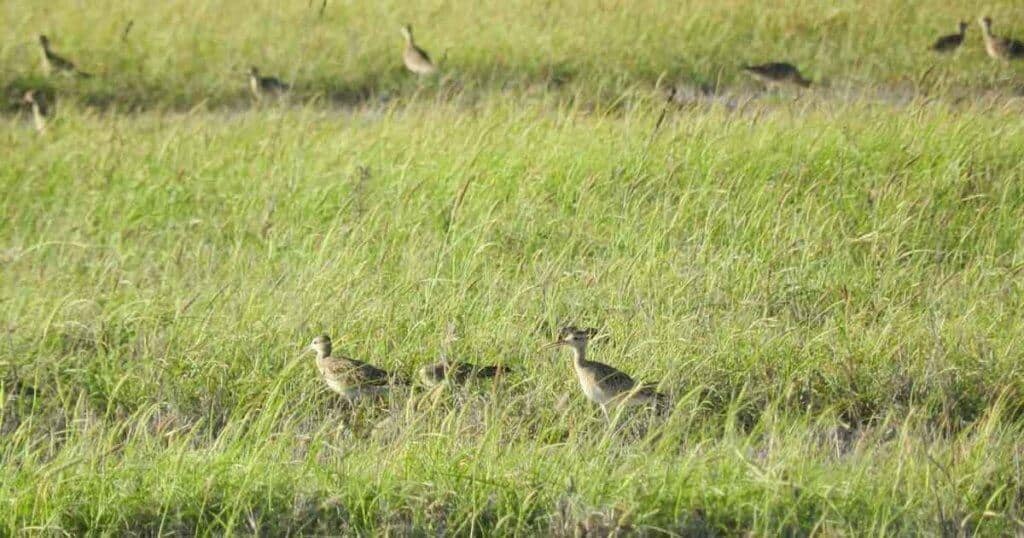
We were therefore delighted over the next two-week period as we watched the numbers of Little Curlew steadily grow to ten to fifteen thousand as they gathered together on the grassland and beach areas 20km south of Anna Plains Station (and probably many more elsewhere).
A successful catch
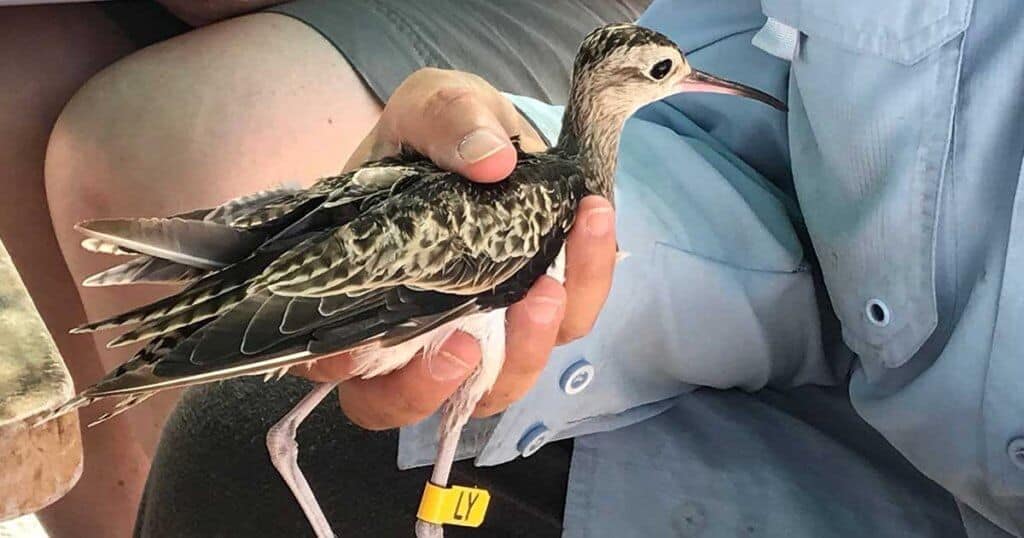
Eight Little Curlew were cannon netted as they roosted on the beach on the incoming tide on 14th February. Five were fitted with 5-gram Microwave Telemetry satellite transmitters and engraved leg flags – LL, LK, LS, LU and LY.
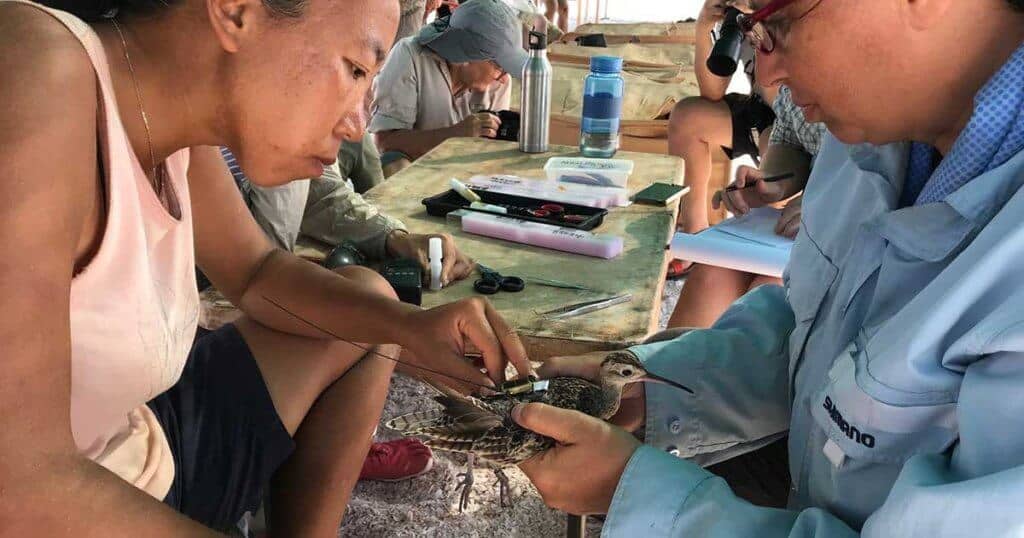
Since then all five Little Curlews have remained in the same general area of Anna Plains Station and 80 Mile Beach, about 20km south of the Anna Plains Station Homestead (Figures 1a. and 1b.).
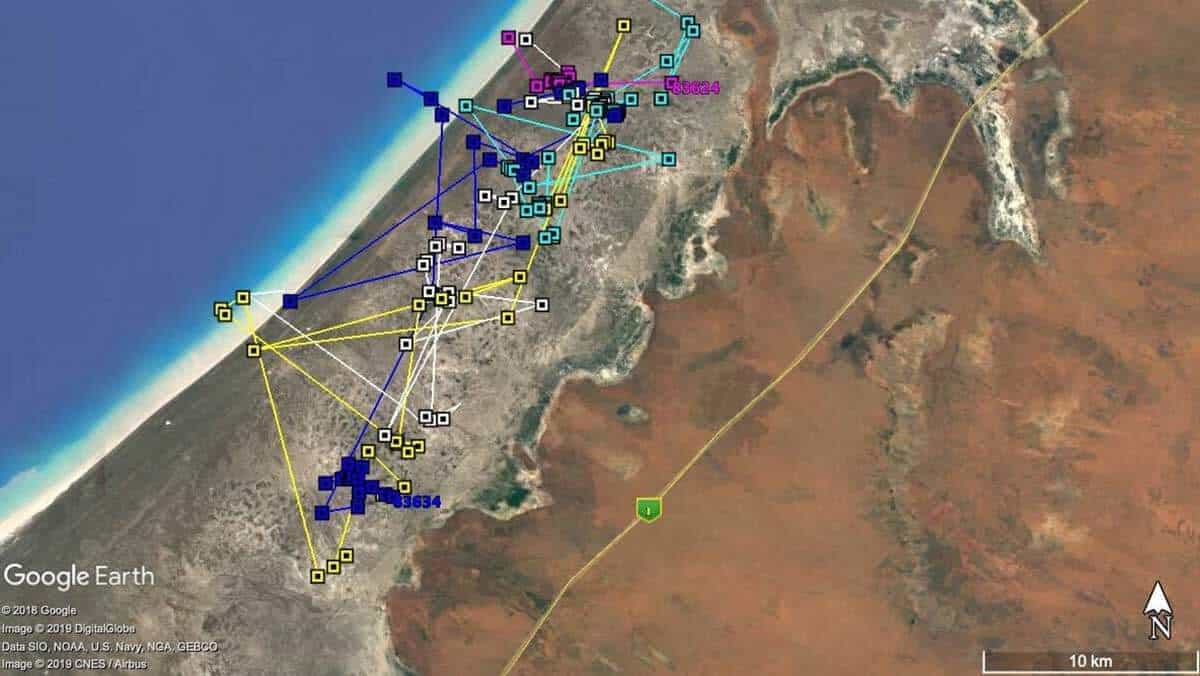
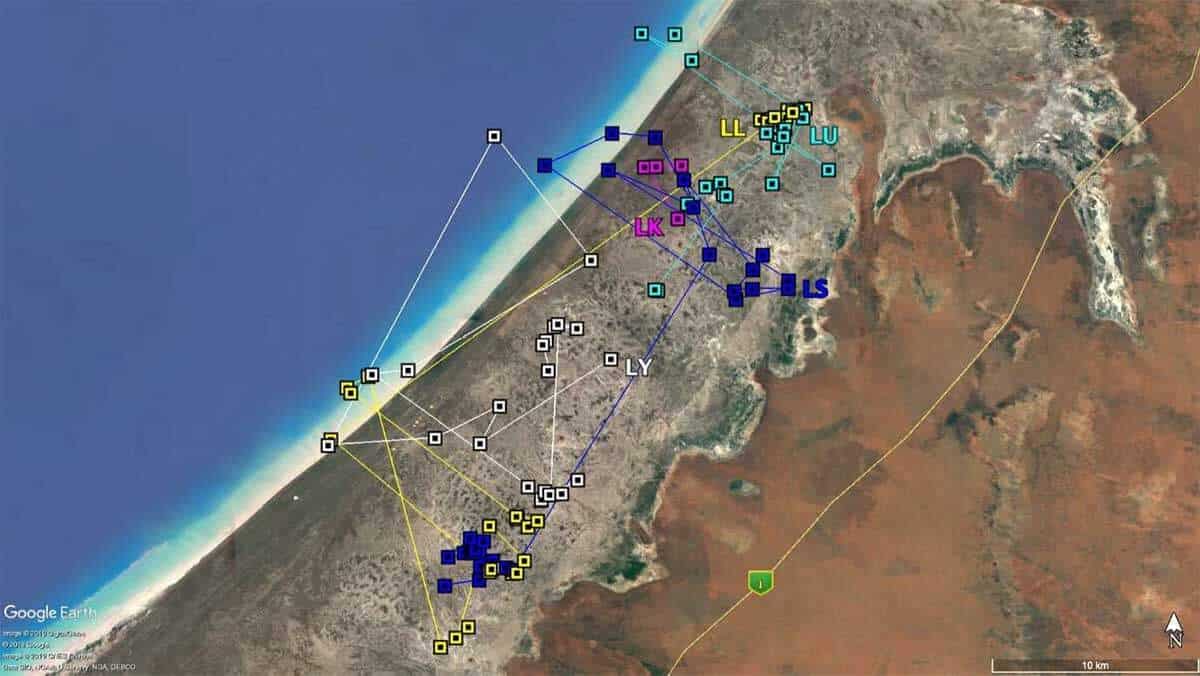
The Little Curlew are still mainly feeding on the grazed grasslands of Anna Plains Station and adjourning occasionally to the nearby coastal beaches/mudflats of 80 Mile Beach. Whilst most birds have ranged around for up to 50km or more, the movements of one bird are rather circumscribed and it maybe that this is in fact a reflection of a bird we have lost and/or a transmitter which has been shed.
It is possible that some or all of these four birds will move back to Roebuck Plains near Broome before their main northward migration. However, the feeding conditions at Anna Plains Station are so good this year, that birds may remain there right up until they depart on northward migration, probably in April.
Acknowledgements
Clive Minton
The extensive and expensive satellite tracking program we have set up in NWA has only been possible through the efforts and generosity of a large number of people and organizations. It is difficult to know where to start with the formal acknowledgements so I will list them – but not in any particular order of priority.
- The members of the AWSG NWA 2019 Wader and Tern Expedition and similar NWA expeditions in previous years, are particularly thanked for their efforts in the field in catching, banding and deploying transmitters on a range of species.
- Landowners are especially thanked for permission to go onto their property to enable us to catch various species in order to deploy the satellite transmitters. In particular we thank Anna Plains Station for giving us the freedom to roam over large areas of grazed grassland when counting and catching target species.
- AWSG acknowledges the Yawuru People via the offices of Nyamba Buru Yawuru Limited for permission to catch birds on the shores of Roebuck Bay, traditional lands of the Yawuru people.
- AWSG acknowledges the Karajarri and Nyangumarta people for permission to catch birds to be marked for this project on the shores of 80 Mile Beach, traditional lands of the Karajarri and Nyangumarta.
- The cost of the satellite transmitters, which cost around $5000 each, and the satellite downloading costs (around $1000-1500 per month) have been met by a variety of sources. Private individuals (Charles Allen and Doris Graham) have made most generous individual contributions. Kate Gorringe-Smith and her team of artists involved in The Overwintering Project made a large, generous donation from funds raised during their various public exhibitions. The annual NWA Expedition members, collectively, also provided significant funds each year.

